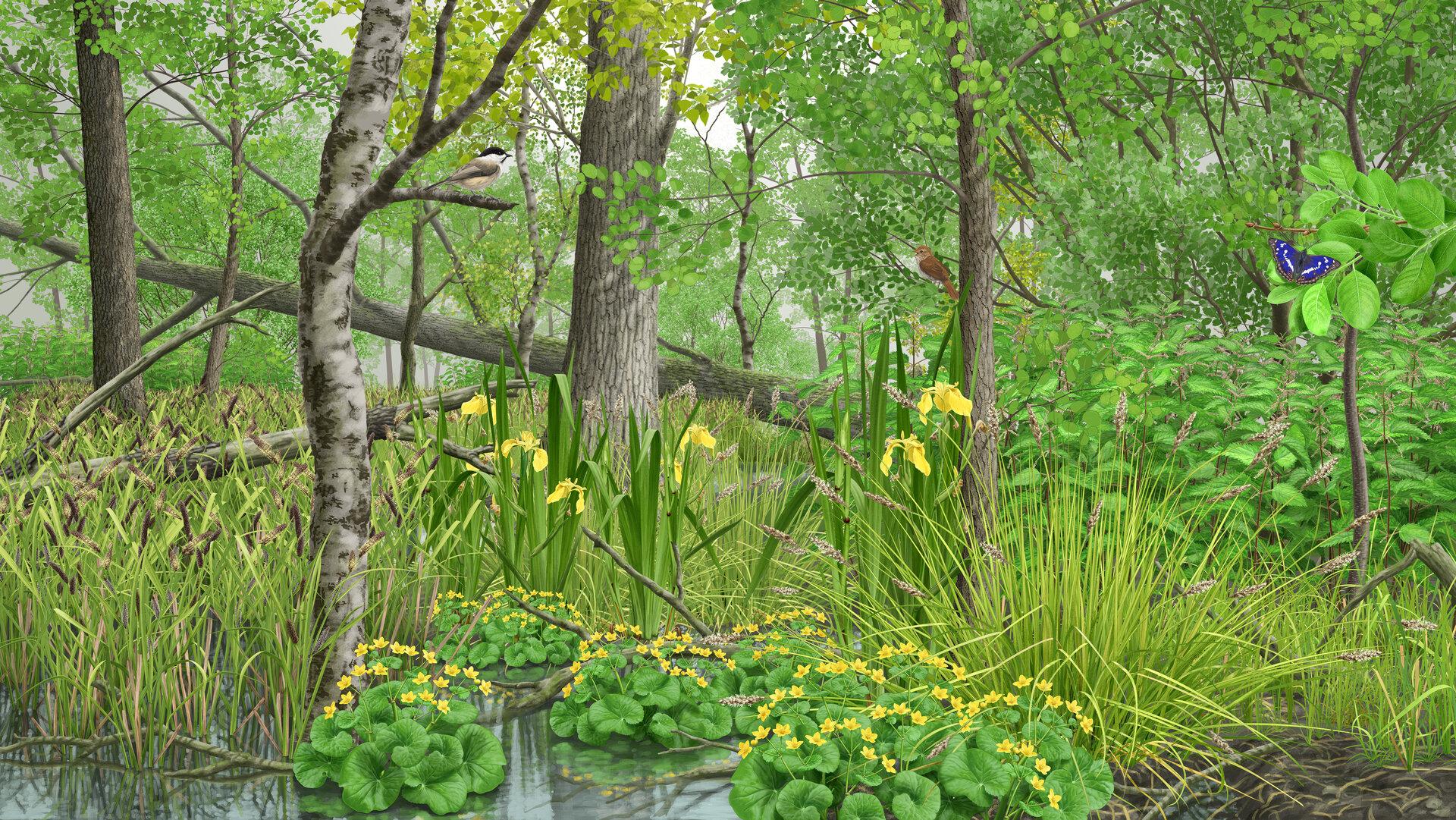
Riparian and alluvial forests with alder are found on wet peaty soils. These are forests with trees standing with their feet in the water. The alternation of open water, marsh vegetation and scattered black alders is typical for this woodland type. In summer, the soil dries out only superficial. Black alder is the most common tree species along with willows such as grey sallow, goat willow and downy birch. In slightly drier places, other tree species can be found such as European ash and the occasional pedunculate oak.
The herb layer contains mainly bog species that can also be found outside woods, such as marsh marigold, yellow iris, greater pond-sedge, lesser pond-sedge, common marsh bedstraw, common skullcap, meadowsweet, cabbage thistle, greater tussock-sedge, marsh fern and many others.
Alder brook forests, like other wet biotopes, are important to us as a buffer against drought, floods and climate change.
Discover the interactive drawing below to explore these wet forests.

This page and interactive drawing received financial support from the EU-life programme(opent nieuw venster) more specifically from the LIFE Green Valley project.(opent nieuw venster)

